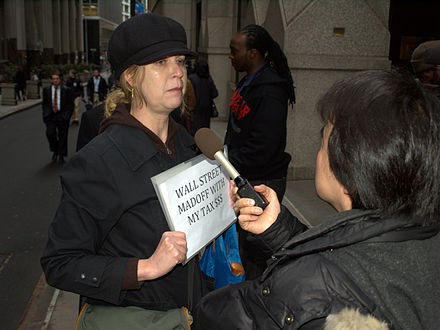Counterparty Risk Is a Top Concern in the Wake of the Credit Crisis Wall Street & Technology
Post on: 16 Март, 2015 No Comment

Buy-side firms have shifted their attention to counterparty risk in the wake of Bear Stearns and now they are focusing on credit default swaps.
Since the credit crisis erupted, buy-side firms have become more attuned to monitoring counterparty risk. The whole experience of watching Bear Stearns unravel as customers lost confidence in the firm, triggering a run on the bank, has led to a heightened sensitivity toward counterparty risk and, yes, the mind-bending realization that even a bulge-bracket firm could fail.
Though the Federal Reserve has made it clear that it won’t let that happen, buy-side traders didn’t know that until Bear Stearns jumped into the arms of JPMorgan, according to a head of fixed-income trading at a large asset manager, who notes that there still is speculation over the financial health of several major financial institutions.
Much of the lingering concern relates to credit default swaps (CDSs), which are traded between two counterparties. These credit derivatives contracts, totaling $62 trillion in notional value, are used as an insurance policy to protect debt holders against the default of an issuer.
Going back to March 2008, there were rumors that hedge funds were asking other primary dealers to reassign their CDS positions with Bear Stearns to other dealers. Some hedge funds didn’t want to take on the counterparty risk of being on the other side of CDS trades with the firm. That, in turn, may have prompted other dealers and asset managers to stop trading with Bear as rumors caused further damage and led the Fed to intervene to prevent the systemic risk of a bankruptcy rippling through the global economy.
Today, there are efforts to establish a central clearinghouse for credit default swaps, an industry-led project that has gained momentum because of regulatory concerns over concentrations of credit risk and the lack of transparency that exists. The question is: How are these concerns over counterparty risk affecting the day-to-day investment and trading strategies of institutions and hedge funds that rely on credit relationships with dealers?
There has been a change in psychology over the past six months and prior, notes Hans Hufschmid, cofounder and CEO of GlobeOp. a major hedge fund administrator that is among the largest transaction processors of derivatives for hedge funds. While the bulge-bracket broker-dealers used to be the strong credit at the table, and the hedge fund no matter what the size was the weak credit, that has changed since what happened to Bear Stearns. Hedge funds have become more cognizant of their counterparty exposure, and they’re trying to actively manage that.
Reducing Risk Exposure

As a sign of this new mind-set, hedge funds have been restructuring their derivatives portfolios to reduce their credit exposure to various sell-side counterparties, Hufschmid contends. They have assigned [their CDS positions], unwound them or liquidated them, he says. While they haven’t changed the risk profiles of their portfolios, They’ve reduced the daily interactions with the Street to make life simpler.
However, the buy side is not pulling out of derivatives. The drive for performance causes the buy side to look for OTC derivatives products, says David Donovan, VP and managing director of Sapient ‘s trading and risk management practice, who notes that the sell side continues to develop more-complex OTC derivative products.
But there’s definitely less of an appetite for operational risk. On the sell side, there have been very strong initiatives by the Fed where the counterparties have to monitor outstanding derivative confirmations, Donovan relates. While the sell side focuses on getting its house in order and uses systems such as the DTCC, Swapswire, T-Zero and Markit to address unconfirmed trades and settlement risk, this is filtering down to the buy side, Donovan asserts.
Indeed, institutions and hedge funds are showing strong support for establishing a centralized clearinghouse facility for credit default swaps. Such a facility would go a long way toward creating transparency and give regulators an inside view of counterparty risk, rather than forcing them to wait for the next disaster to blow up.
Ivy is Editor-at-Large for Advanced Trading and Wall Street & Technology. Ivy is responsible for writing in-depth feature articles, daily blogs and news articles with a focus on automated trading in the capital markets. As an industry expert, Ivy has reported on a myriad. View Full Bio














